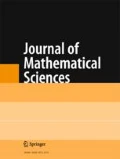We consider a control system described by an evolution equation with control constraint which is a multivalued mapping of a phase variable with closed nonconvex values. One of the evolution operators of the system is the subdifferential of a time-dependent proper, convex, and lower semicontinuous function. The other operator, acting on the derivative of the required functions, is the subdifferential of a convex continuous function. We also consider systems with the following control constraints: multivalued mappings whose values are the closed convex hulls of the values of the original constraint and multivalued mapping whose values are the extreme points of the convexified constraint that belong to the original one. We study topological properties of the sets of admissible “trajectory–control” pairs of the system with various control constraints and clarify the relations between them. An example of a parabolic system with hysteresis and diffusion phenomena is considered in detail. Bibliography: 19 titles.
Similar content being viewed by others
References
H. Brezis, Operateurs maximaux monotones et semi-groupes de contractions dans les espaces de Hilbert, North-Holland, Amsterdam etc. (1973).
A. A. Tolstonogov, “Properties of the set of admissible “state-control” pairs for first-order evolution control systems” [in Russian], Izv. Ross. Akad. Nauk, Ser. Mat. 65, No. 3, 201–224 (2001); English transl.: 65, No. 3, 617–640 (2001).
N. Yamazaki, M. Takahashi, M. Kubo, “Global attractors of phase transition models with hysteresis and diffusion effects,” GAKUTO Intern. Series. Math. Sci. Appl. 14, 460–471 (2000).
K. H. Hoffmann, N. Kenmochi, M. Kubo, N. Yamazaki, “Optimal control problems for models of phase-field type with hysteresis of play operator,” Adv. Math. Sci. Appl. 17, No. 1, 305–336 (2007).
A. Visintin, Differential Models of Hysteresis, Springer, Berlin (1994).
K. Kuratowski, Topology. I, Academic Press, New York etc. (1966).
H. Attouch, “Familles d’operateurs maximaux monotones et mesurabilite,” Ann. Math. Pure Appl. 120, No. 4, 35–111 (1979).
C. J. Himmelberg, “Measurable relation,” Fund. Math. 87, 53–72 (1975).
N. Kenmochi, “Solvability of nonlinear evolution equations with time-dependent constraints and applications,” Bull. Fac. Educ. Chibo Univ. 30, 1–81 (1981).
N. Kenmochi, “On the quasi-linear heat equation with time-dependent obstacles,” Nonlinear Anal. 5, No. 1, 71–80 (1981).
V. Barbu, Nonlinear Semigroups and Differential Equations in Banach Spaces. Noordhoff Intern. Publ., Leyden, the Netherlands (1976).
M. G. Crandall, A. Pazy, “Semigroups of nonlinear contractions and dissipative sets,” J. Funct. Anal. 3, 376–418 (1969).
H. Attouch, A. Damlamian, “Problemes d’evolution dans les Hilberts et applications, J. Math. Pures Appl. 54, No. 1, 53–74 (1975).
Y. Yamada, “On evolution equations generated by subdifferential operators,” J. Fac. Sci. Univ. Tokyo Sect. 1A 23, No. 3, 491–515 (1976).
A. A. Tolstonogov, D. A. Tolstonogov, “L p -continuous extreme selectors of multifunctions with decomposable values: Existence theorems,” Set-Valued Anal. 4, 173–203 (1996).
K. Kuratowski, Topology. II, Academic Press, New York (1968).
A. A. Tolstonogov, Scorza-Dragoni’s theorem for multi-valued mappings with variable domain of definition” [in Russian], Mat. Zametki 48, No. 5, 109–120 (1990); English transl.: Math. Notes 48, No. 5, 1151–1158 (1990).
A. A. Tolstonogov, “A theorem of Bogolyubov with constraints generated by a second order evolutionary control system” [in Russian], Izv. Ross. Akad. Nauk Ser. Mat. 67, No. 5, 177–206 (2003); English transl.: Izv. Math. 67, No. 5, 1031–1060 (2003).
A. A. Tolstonogov, D. A. Tolstonogov, “Lp-continuous extreme selectors of multifunctions with decomposable values: Relaxation theorems,” Set-Valued Anal. 4, 237–269 (1996).
Author information
Authors and Affiliations
Corresponding author
Additional information
Translated from Problemy Matematicheskogo Analiza, 42, August 2009, pp. 95–127.
Rights and permissions
About this article
Cite this article
Tolstonogov, A.A. Properties of the set of “trajectory-control” pairs of a control systemwith subdifferential operators. J Math Sci 162, 407–442 (2009). https://doi.org/10.1007/s10958-009-9644-3
Received:
Published:
Issue Date:
DOI: https://doi.org/10.1007/s10958-009-9644-3


